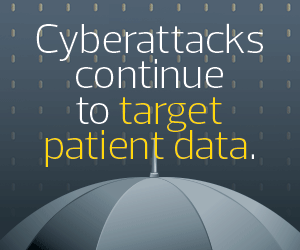Comparing SIM, eSIM and iSIM Technology
eSIM cards debuted in smartwatches in 2016 and smartphones in 2017. Because eSIM is embedded, it eliminates the need for a physical SIM card reader, a SIM card tray and a mechanism to open the device. This saves space and makes it easier to create a seal that’s waterproof and able to withstand temperature fluctuations as well as vibrations, Devarapalli says. That’s a key feature for wearables, bedside monitoring devices, surgical instruments and outdoor security cameras.
Apple notably ditched the physical SIM card in iPhone 14 models in September 2022 — a big part of what has pushed eSIM adoption past its inflection point. Other manufacturers are rolling out eSIM-only designs in their flagship phones, such as the Google Pixel and Samsung Galaxy. Consumer benefits include the ability to use two phone numbers at the same time, including numbers from different carriers, and to add international plans without buying a physical SIM card.
Additionally, PCs running Windows 11 and Windows 10 can establish cellular connections using eSIM. This is an important consideration for hospitals and health systems that need certain PCs to have reliable connections.
“Cellular networks have better propagation through concrete walls than Wi-Fi networks,” Devarapalli says. “They also have better interference management, which is a common problem if you create a Wi-Fi network with a lot of access points.”
Connecting PCs and other eSIM-enabled devices to a public or private cellular network also provides security benefits, Devarapalli says. “When you authenticate via SIM, you generate a set of keys that are never exposed. Internal authentication is much stronger than password-based authentication.” (Plus, attackers can’t steal eSIM cards without stealing an entire device, and in the event of a theft, an eSIM card can be wiped remotely.)
Looking further into the future, the integrated SIM aims to transform the embedded SIM card from a single chip on a device’s motherboard to one of many components of a “system on a chip.” iSIM is more expensive to manufacture than eSIM and hasn’t made its debut in any smartphones yet; on the other hand, it uses less power and takes up less space, which leaves room for more powerful batteries.
iSIM is basically the same technology as eSIM with a different form factor, Devarapalli says. As iSIM begins to gain momentum, manufacturers should be able to make a seamless transition from eSIM to iSIM. That means health system leaders should keep a close eye on how iSIM adoption tracks and consider where and when it offers advantages over eSIM in their IT environment.
What Is the Impact of eSIM Adoption on Medtech?
As noted, because eSIM cards don’t need to be removed to be serviced, manufacturers can create durable devices that are waterproof, able to withstand high and low temperatures, and able to function amid vibrations or other sudden movements. Cellular connections also make it possible to deploy devices in areas with limited access to broadband internet, removing a common barrier to device adoption in rural and underserved communities.
LEARN MORE: What is digital health and how is it evolving?
There are a wide range of use cases inside and outside the hospital:
- Supporting remote patient monitoring at the bedside or at home using sensors or wearables to track activity and sleep, smart pill boxes, or medical alert systems
- Deploying point-of-care diagnostic devices such as blood glucose and blood pressure monitors in community care settings or a patients’ homes
- Transmitting data from patches applied to the body as well as implantable devices, including smart pills, to smartphones or purpose-built sensors
- Tracking medical equipment, dispensed medications and other important (and expensive) assets as they move throughout the hospital
- Transmitting data directly from medical equipment such as X-ray machines and MRI scanners without requiring custom software or internet connectivity
- Monitoring vital signs and reviewing patient records in an ambulance as a patient is en route to the emergency department
- Monitoring the temperature of vaccines or medications as they’re shipped from the manufacturer to a clinic, which helps determine whether items can be used or must be discarded
- Setting up field clinics to administer vaccines, providing onsite acute care or testing for infectious diseases such as COVID-19
- Improving onsite security by with weatherproof cameras throughout the hospital campus, including outside doors and in parking lots
In these use cases, Devarapalli says, it’s important to consider how to manage initial setup and periodic updates, particularly for clinician- and patient-facing devices. Consumers may be comfortable updating eSIM profiles on smartphones and tablets, but medical devices are another matter. “Don’t leave setup to the end user,” he says. “Leave it to the professionals to make the right connections.”











